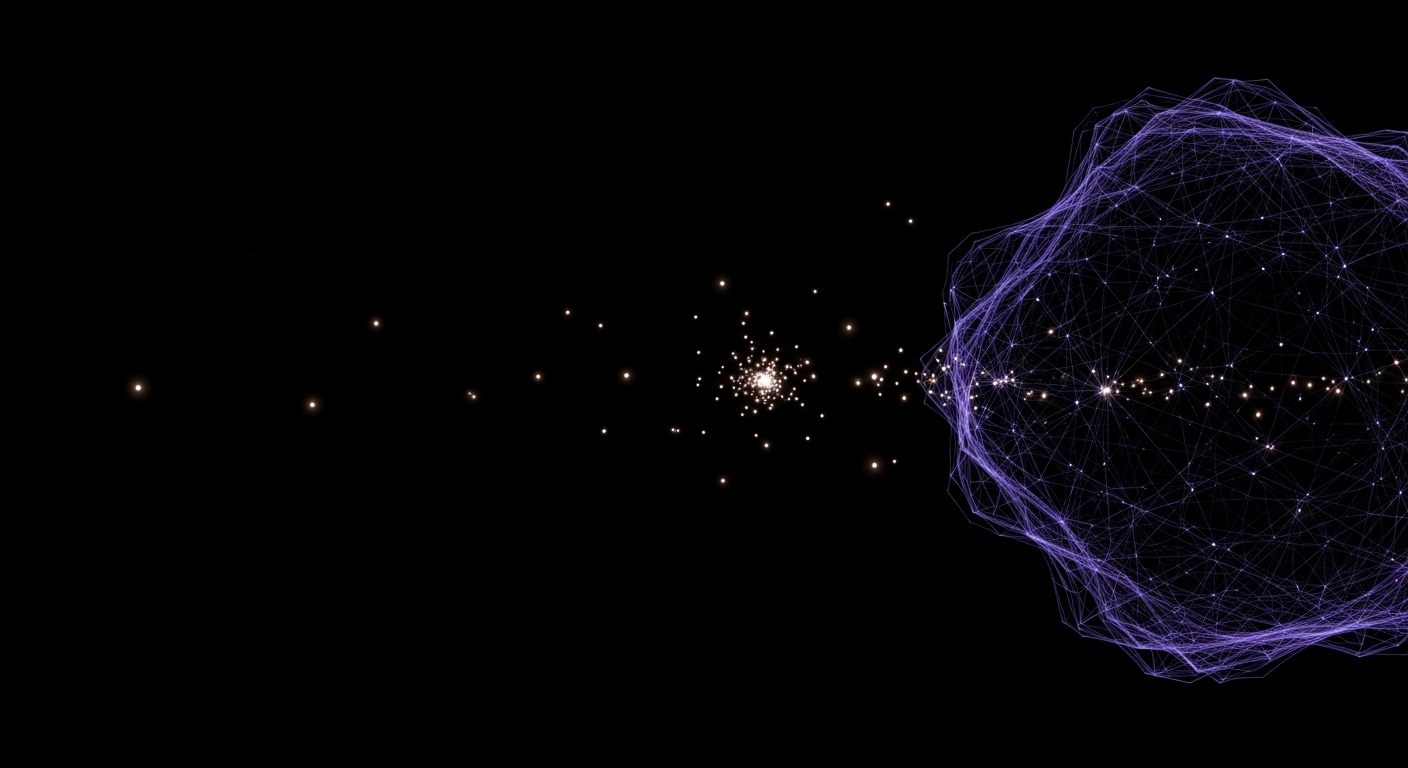A Bayesian Perspective on Evidence for Evolving Dark Energy

In our latest work, 2511.10631, we provide a new Bayesian analysis of the recent claims for evolving dark energy from the Dark Energy Spectroscopic Instrument (DESI). This study, led by group member Dily Duan Yi Ong in collaboration with David Yallup and Will Handley, delves into the statistical foundations of a result that has generated significant excitement in the cosmology community.
A Tale of Two Methodologies
The recent DESI data release (2404.03000) reported a compelling preference for a dynamic dark energy model ($w_0w_a$CDM) over the standard cosmological constant ($\Lambda$CDM). When combining DESI Baryon Acoustic Oscillation (BAO) data with Cosmic Microwave Background (CMB) measurements from the Planck satellite (1807.06209), the collaboration’s frequentist analysis found a 3.1σ significance favouring the more complex, evolving model.
Our investigation takes a different approach, applying the principled framework of Bayesian model comparison. Using the nested sampling algorithm PolyChord (1506.00171), we computed the Bayesian evidence for both models. The results are striking: for the key combination of DESI BAO and Planck CMB data, the Bayesian evidence modestly favours the simpler $\Lambda$CDM model. This discrepancy highlights a critical tension between the conclusions drawn from frequentist and Bayesian statistical frameworks for this specific problem.
Uncovering the Source of the Signal
So, where does the preference for evolving dark energy originate? Our analysis reveals that this signal is not inherent to the DESI BAO data itself. Instead, it emerges only when a specific external dataset is introduced: the DES-Y5 supernova catalogue.
- DESI + CMB: The evidence modestly favours the standard $\Lambda$CDM model.
- DESI + CMB + Pantheon+ Supernovae: The evidence for $\Lambda$CDM becomes stronger.
- DESI + CMB + DES-Y5 Supernovae: The tables turn, and the evidence swings to strongly favour the evolving $w_0w_a$CDM model, reaching a Bayesian significance of approximately 3.1σ.
This pivotal dependence on the DES-Y5 dataset prompted us to conduct a comprehensive tension analysis. Using a suite of five complementary metrics from our unimpeded evidence framework, we pinpointed the cause. We found a significant, low-dimensional statistical tension ($\approx 2.95\sigma$) between the DESI BAO and DES-Y5 datasets, but only within the confines of the $\Lambda$CDM model. The more flexible $w_0w_a$CDM model is preferred precisely because its additional parameters are highly effective at resolving this specific inter-dataset conflict.
A Call for Cautious Interpretation
Our findings suggest that the strong preference for evolving dark energy is not necessarily a sign of new physics, but rather a statistical reflection of tensions between different cosmological probes. The $w_0w_a$CDM model’s success appears to be driven by its ability to reconcile these tensions, a conclusion that aligns with independent geometric analyses (2404.10014).
This work underscores the importance of employing multiple statistical methodologies to scrutinise potentially groundbreaking claims. By leveraging a robust Bayesian framework, we provide a more nuanced interpretation: the evidence for a dynamic dark energy is significantly overstated and its statistical support is critically dependent on the resolution of tensions between specific datasets.



Content generated by gemini-2.5-pro using this prompt.
Image generated by imagen-4.0-generate-001 using this prompt.